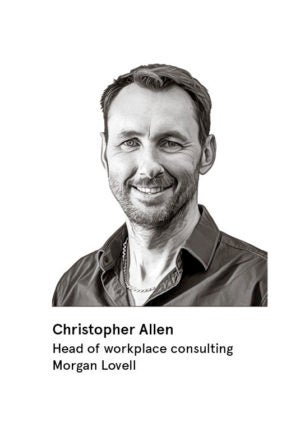
To understand how the workplace of the future might take shape, it is useful to first look at the evolution of office design. While the first examples of clerical work can be traced back to the Middle Ages, the standard narrative is that the modern office began with the Larkin Building in Buffalo, New York, in 1903. The internal design of this building, with its large, open-plan spaces and cellular or corner offices for bosses, would go on to influence many of the workplaces that emerged in the early and mid-part of the 20th century.
As new technologies emerged, however, there were attempts to refine the open-plan design. American engineer Frederick Taylor pioneered a system that would eventually be called Taylorism, which put lots of workers in evenly spaced rows under the watchful eye of management. But this model emphasised the hierarchy within the workplace, putting unnecessary pressure on workers.
Efforts therefore soon turned to democratising these spaces. In the 1950s, two German brothers developed the Bürolandschaft concept, a far more egalitarian management system that sought to break down both physical and metaphorical walls, and match lines of communication with organic layouts.
The next pivotal development took place in the late 1970s, as the financialisation of the world economy took hold. An ideological shift in capital creation and individualism prompted organisations to design cellular office spaces, often referred to as cubicle farms. Naturally, however, these workplaces, which still exist today in great numbers, lack daylight and isolate their occupiers.
Since that moment, of course, the exponential development of computers and other digital technologies has driven monumental change in office design. Laptops and mobile phones have given people the ability to work flexibly from the locations which suit their needs that has in turn led to a gradual reduction in traditional desk-based work. The first sign of this change was the emergence of breakout spaces such as soft seating and café tables.
Meanwhile, the distinction between office and public space has become blurred, as cafés, hotels and homes are increasingly used to carry out work tasks.
This evolution can be seen as a grand exercise in trial and error towards developing the future workplace. Each of the iterations was designed and developed to improve the way we work, but the quirks of each new development have also highlighted a critical lack of understanding in the way people behave within organisational systems and in their relationship to space.
Workplaces which feature open-plan spaces can deny employees the right to privacy. Heavily cellular offices, on the other hand, can produce the opposite effect, isolating and alienating staff. Likewise, working either from home or remotely sometimes denies people the chance to communicate and collaborate with colleagues.
A destination workplace, or village, would be somewhere that ensures all an employee’s needs are met and therefore, when employees have a choice of where to work, they choose to work there. After all, villages are by their nature large multi-functional spaces that provide a range of services and amenities to their residents.
Stress at work is at a record high. Figures from the Health and Safety Executive show 526,000 people suffered from work-related stress, depression or anxiety in 2016-17. With people spending more time working than ever before, it is imperative that organisations design workplaces that can alleviate any mental health problems, and boost employee wellness and happiness.
Take care of your employees and they will care more, become more engaged and ultimately perform better
There is also a growing consensus that looking after your employees’ needs and providing them with the best possible workplace will deliver better business outcomes. The rationale is simple: take care of your employees and they will care more, become more engaged and ultimately perform better.
In a recent project, entertainment company AMC Networks wanted a dynamic office design that supported different creative disciplines, so it opted for a three-floor destination workplace to house its previously disparate workforce, complete with the physical, virtual and social infrastructures necessary to support creative collaboration. In the endeavour to create that all-important, village-esque sense of community, the ground floor has been designed to offer a focal point for the staff to eat lunch, socialise and work. There’s even an on-site cinema that can be used for work or play to aid social cohesion in and out of hours.
There’s a lot of professional interest surrounding case studies like this and perhaps that is why we are often approached by a range of clients seeking to achieve a destination workplace. We know to make a village work there needs to be connection in a virtual and physical way.
As office fit-out experts, we add strategy to workplaces and assist with change management. Integral to the success of this process is improving the emotional intelligence of business leaders through training. Upskilling managers in this area will ease the transition for workers, who will better comprehend the organisation’s vision thanks to transparent and regular communication. With motivated staff, the financial and other rewards will arrive quicker.
The exponential speed of technological innovations means that further change is inevitable. This is why workplace transformations require wholehearted C-suite backing. By putting people’s considerations at the heart of the change, this offers a rare and critical opportunity to engage, or re-engage, employees through the process.
An organisation’s culture can be heavily influenced by the appropriate workplace. The secret is trust. Moreover, it is important to stress that allocating significant budget to upgrading the workplace is imperative to the people of a business, whatever that looks and feels like.
The concept of the destination village not only represents the culmination of more than a century of office design, but also the future workplace. It is the key to happier, more productive people and far better organisational outcomes.
For more information please visit morganlovell.co.uk






